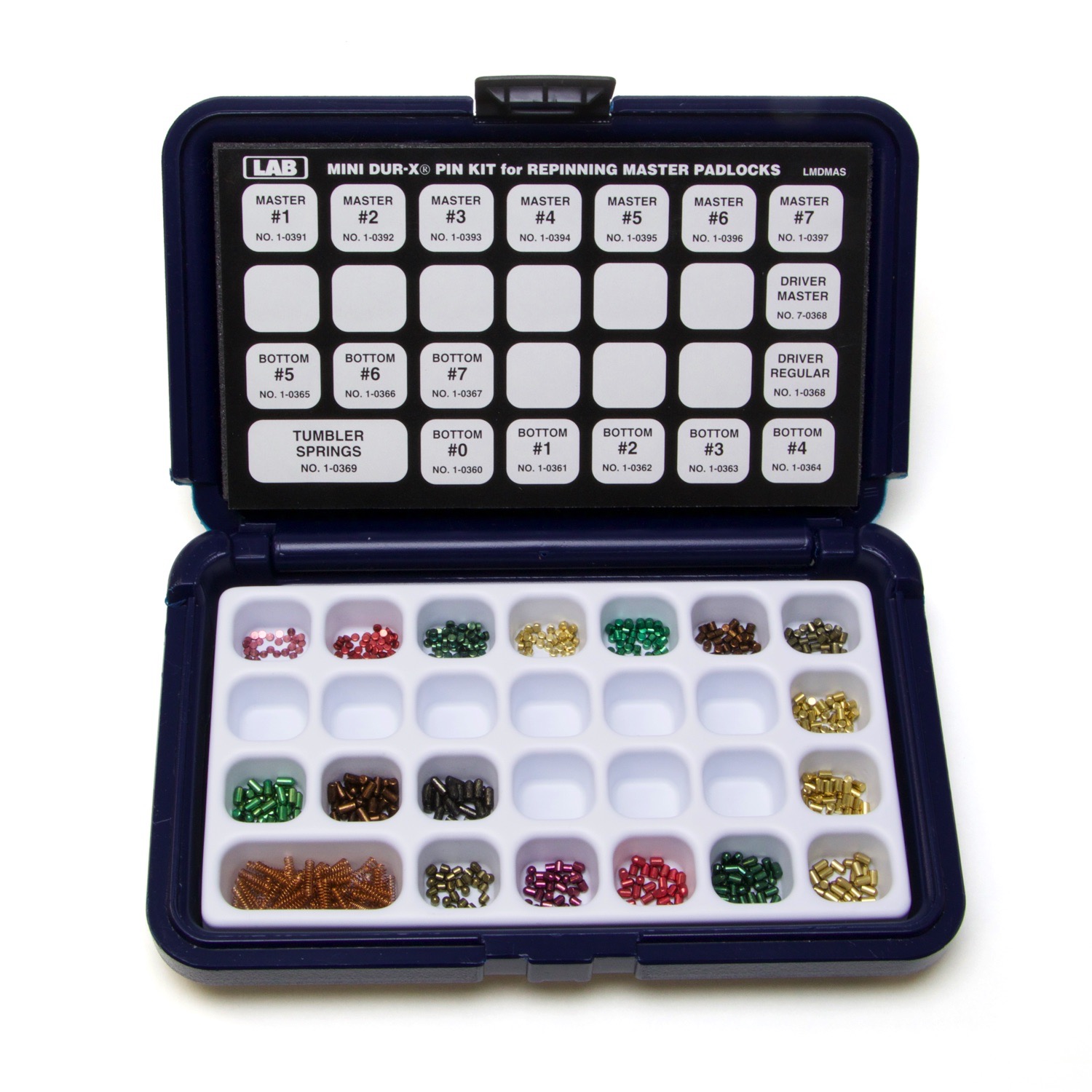

The exterior steel case is also well worn with deep scratches. The interior has some wear and soiling and some of the pin bins are empty and some are not full. The kit contains hundreds of different pins that can be used on a host of different lock types, including: ARROW- CORBIN- CORBIN-RUSSWIN- DEXTER- ILCO- KWIKSET- LORI- SARGENT- SCHLAGE- SEGAL- WEISER- WESTLOCK- YALE The kit has the typical wear of equipment that has been used in the field. Which measures roughly 21 1/2" x 7 1/2" x 2" is part of a former locksmith's service inventory and has been used in the field.

See a video of t his k it right here* The kit. The kit was produced by LAB Security Systems Corporation and is known as the.003 Kit.
LAB MASTER LOCK PINNING KIT PROFESSIONAL
One is for 6300/LFICs and the other is for conventional cylinders.įinally, we have 2 key bitting specifications one for the DG1 sub-system and one for the DG2/DG3 sub-system.Up for bids is an early 1980's LAB Professional Lock Cylinder Pin Kit. Second, we have two Sargent Degree pinning worksheets on our Pinning and Decoding Worksheets page. We have 4 tools available to assist you with creating pinning charts for Sargent Degree LFICs:įirst, we have Sargent’s Degree Key System Technical Manual. Sargent Degree cylinders, except hotel function cylinders and LFICs, use the “21 -” option for construction master keying capabilities. As you can see in the illustration below, this design is in place so that only these special wafers can become trapped in the plug. This hole captures a special wafer through typical construction keying change/protocol. Similar to a “lost ball” design, a Sargent Degree plugs with the appropriate cylinder option contain a “donut” hole to the left and right of the 3rd chamber. Here is a pinning chart example for a master keyed, Sargent Degree conventional cylinder:Ĭonstruction master keying is available for all Degree platforms by using the “lost wafer” design. In master keyed cylinders and chambers, bottom and master pins (plug total) are added together and subtracted from 10 to determine the top pin. So, if we have a 4 cut used in the 1st chamber of a Sargent Degree conventional cylinder, our top pin must be 6 (4+6 = 10). With Sargent Degree, the plug total must always equal 10 for conventional cylinders. For example, in a Medeco Original cylinder with a 4 cut in the 1st chamber, the locksmith must utilize a 4 top pin. Unlike the previously mentioned Medeco designs/systems, Sargent Degree conventional cylinders do not utilize top pins that match the numeric value of the deepest cut in each respective chamber. This requirement does not impact keys, specifically what angles or depths to use in the 6th position, or vice versa. Do not attempt to force an angled pin into this position as it will eventually cause operational problems. Due to the physical size limitations of the Degree LFIC, which is essentially the same form factor as the traditional Sargent 6300, there is not enough material left in the core to mill the indicator slot for angled pins. Much like the traditional Sargent 6300 LFIC, Degree LFICs utilize two different stack height values: 10 for non-control chambers (chambers 1, 2, 5, 6) and 13 for control chambers (chambers 3 and 4).Īdditionally, DG2 and DG3 key sub-systems must utilize a conical pin in the 6th position of LFICs. Replacement pins, springs, and covers are all available through Sargent distribution channels Large Format Interchangeable Cores (LFICs) The 437 DGM Master Pinning Kit allows you to service DG1, DG2, and DG3 conventional cylinders and LFICs.

The 437 DG1 Standard Pinning Kit services DG1 conventional cylinders and LFICs. Sargent sells two pin kits related to the Degree key systems: If you are at all curious of the influence of Medeco designs with the Degree key system, there is a good reason: the cylinders utilize existing Medeco patents (Sargent and Medeco are sister companies under the ASSA ABLOY umbrella). Degree Level 3, or DG3, is DG2 with a UL437 certification.


 0 kommentar(er)
0 kommentar(er)
